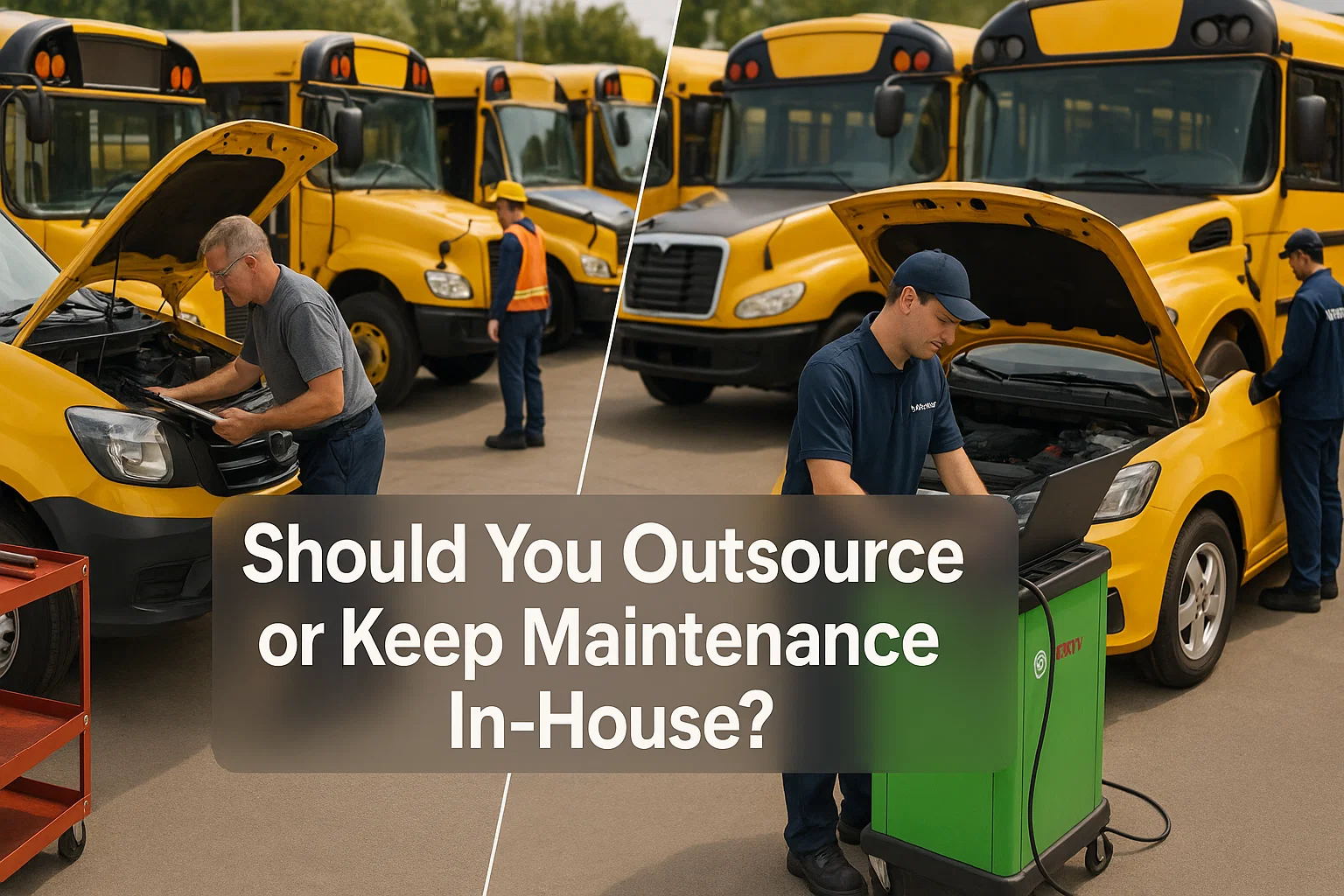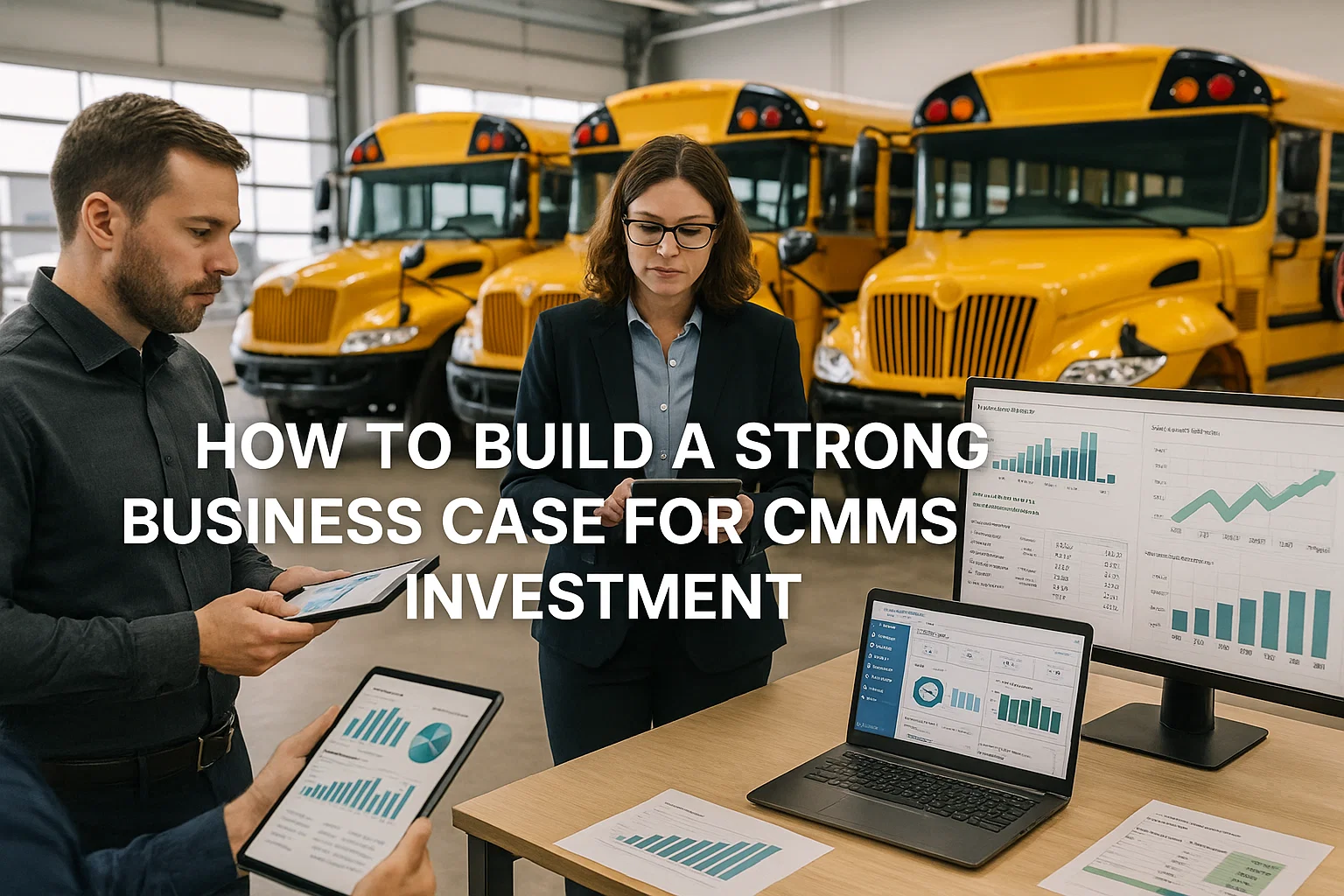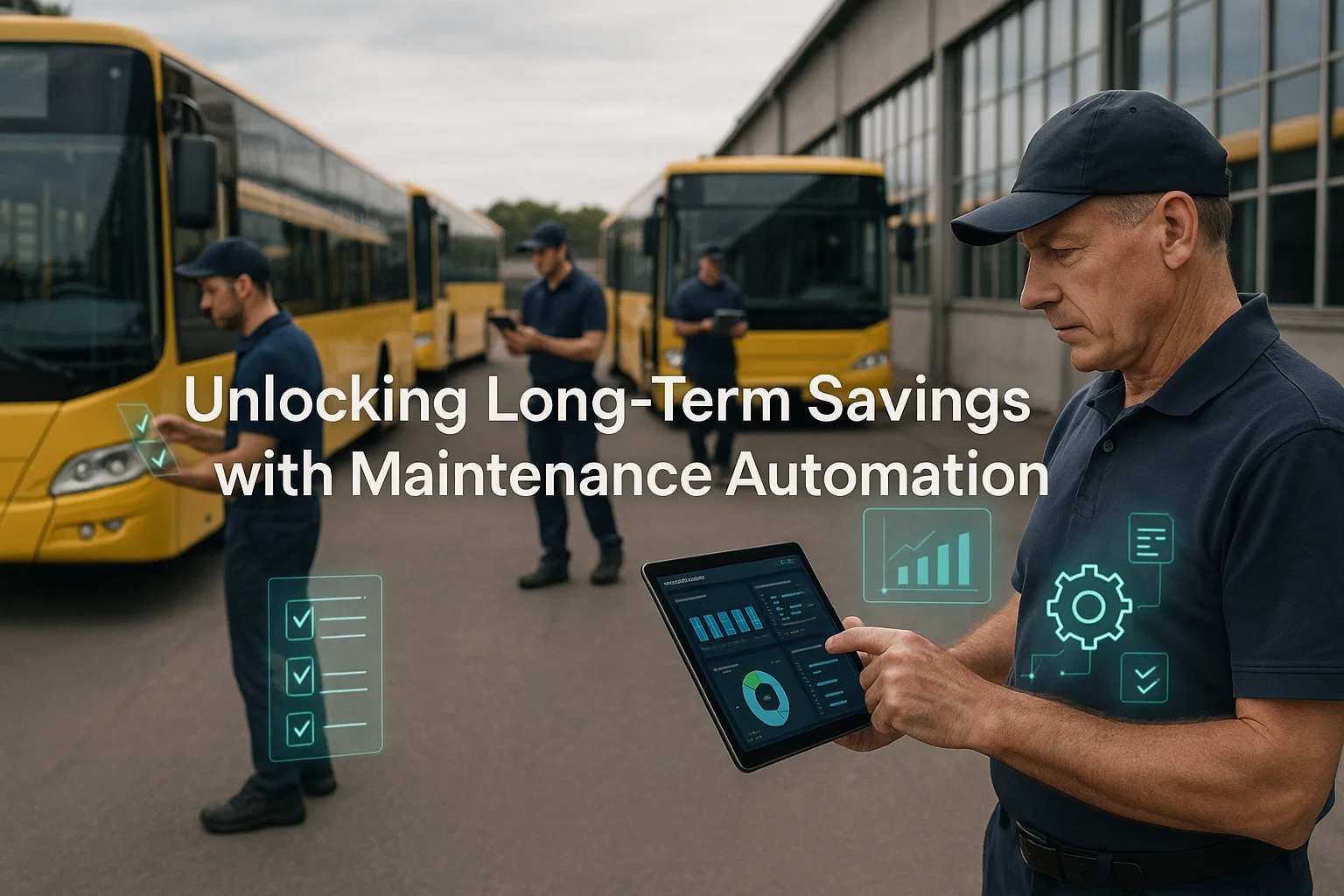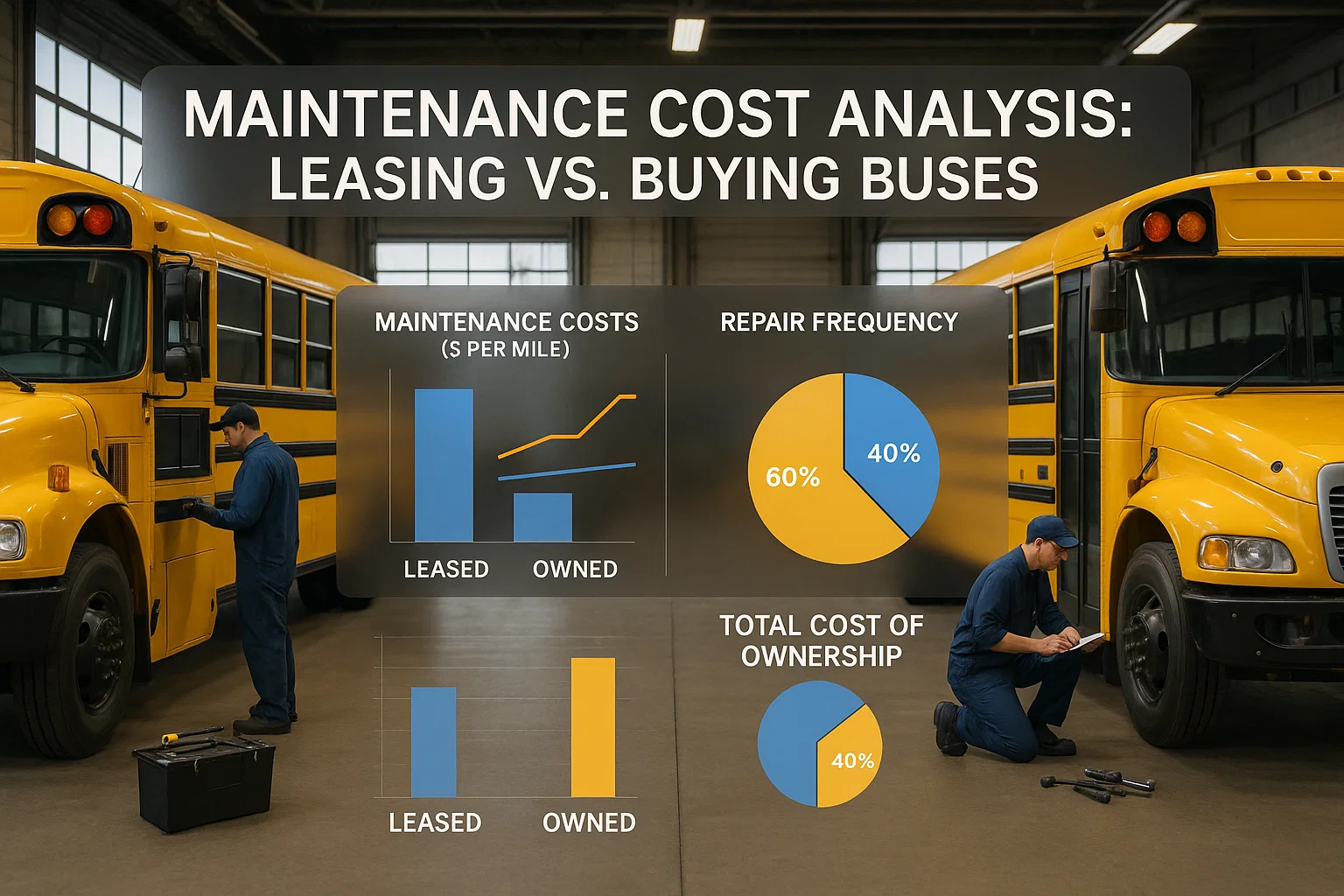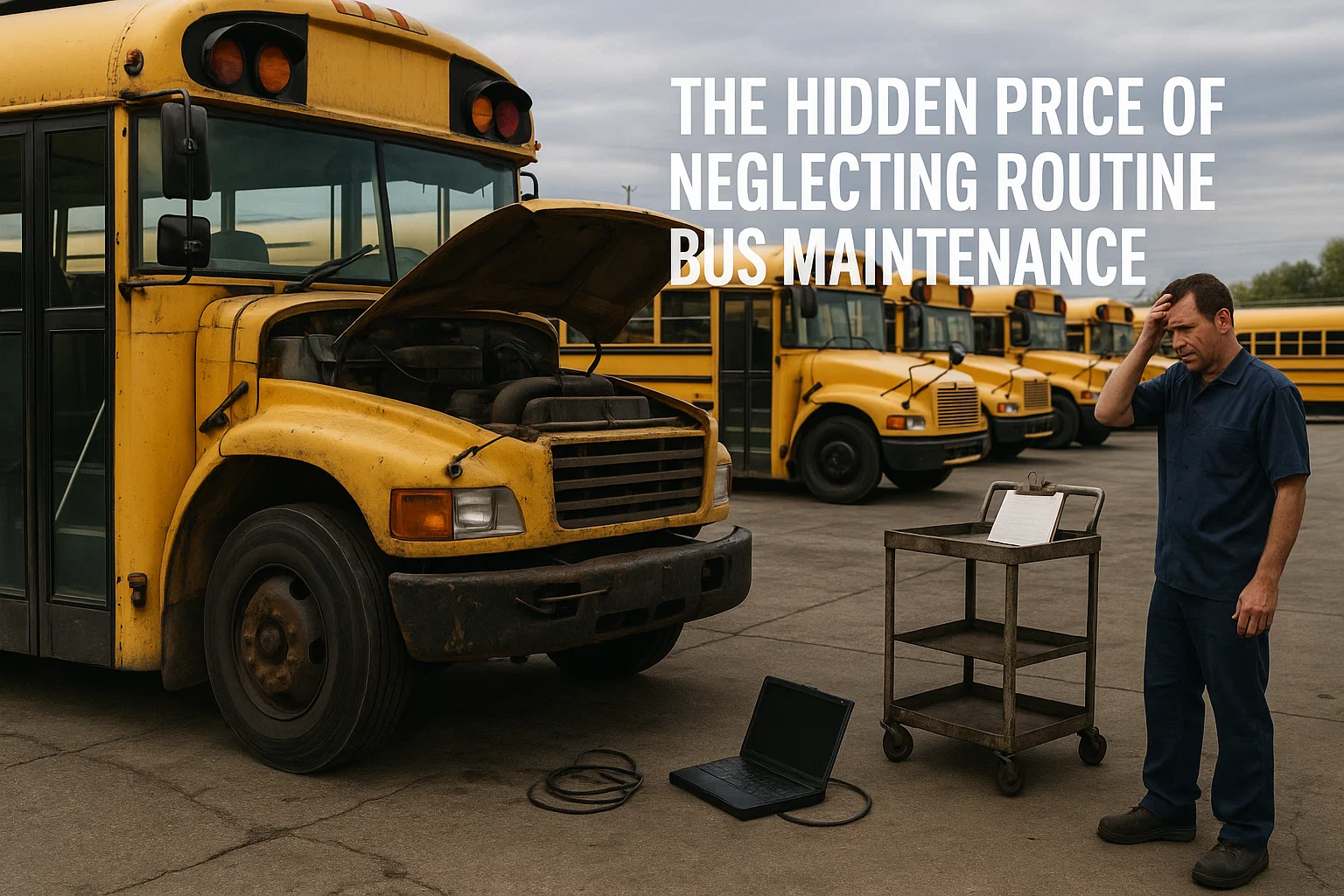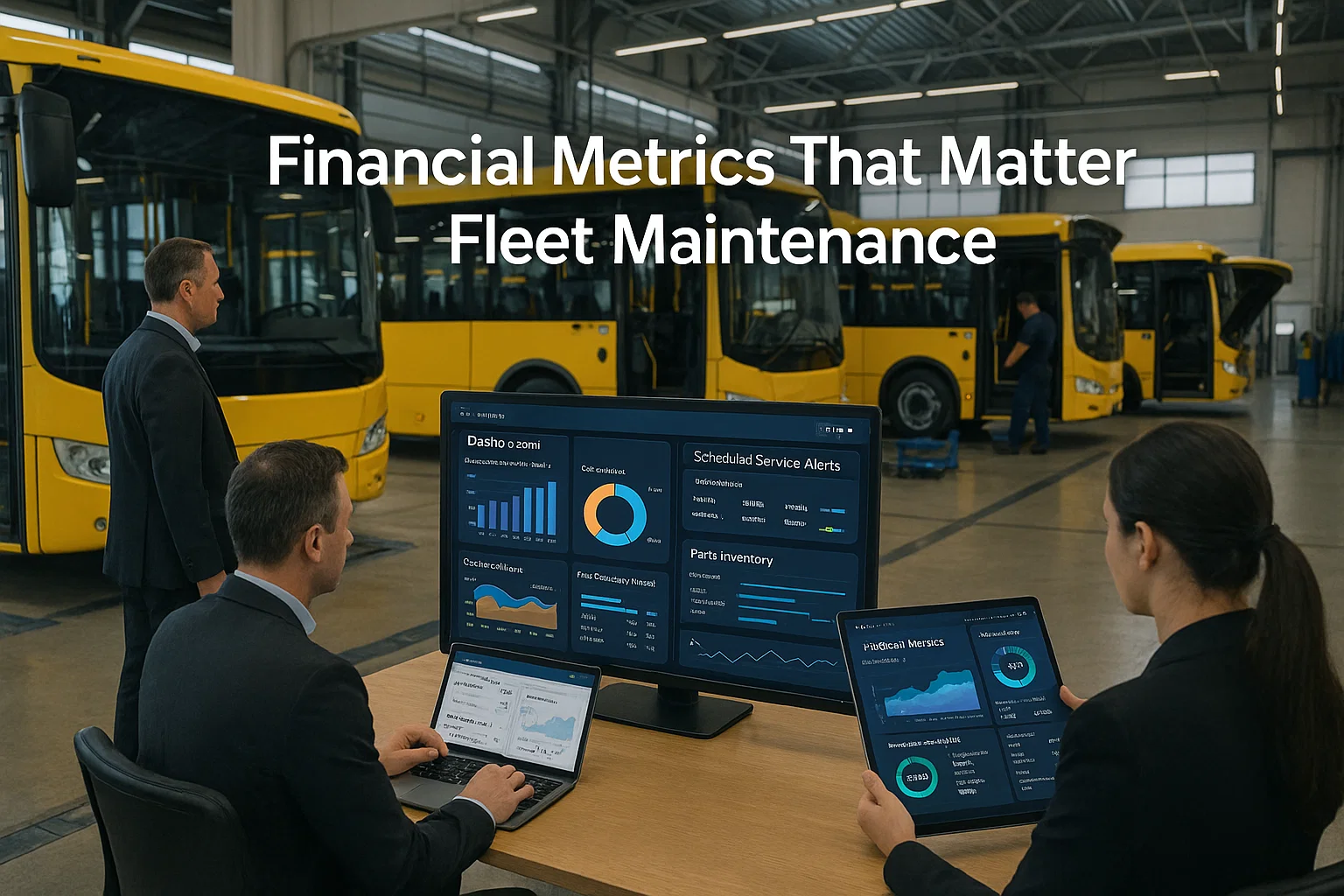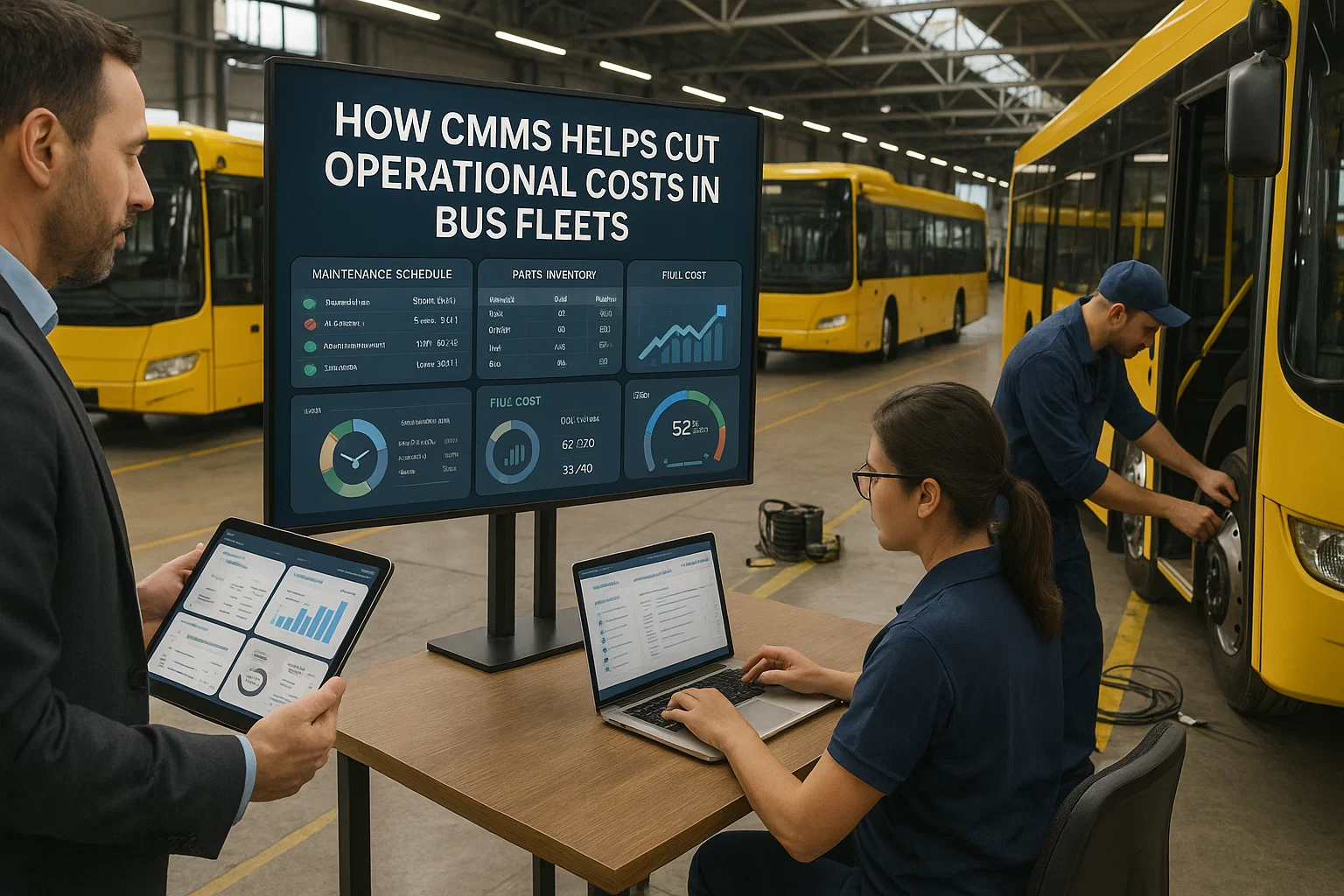The decision between outsourcing maintenance and keeping it in-house represents one of the most strategic choices fleet operators face, with implications reaching far beyond immediate cost considerations. Advanced fleet analytics platforms reveal that this decision impacts total maintenance costs by 25-40%, while affecting service quality, operational control, and long-term fleet sustainability. The complexity of modern bus systems, evolving regulatory requirements, and varying operational demands create vastly different optimal strategies for different organizations.
Traditional approaches to this decision often rely on simplistic cost comparisons that fail to capture the full picture of maintenance economics and operational impacts. Comprehensive maintenance management systems demonstrate that factors including quality control, response times, expertise access, scalability, and strategic flexibility combine to create total value differences that can exceed $500,000 annually for medium-sized fleets. These hidden considerations transform what appears to be a straightforward make-or-buy decision into a complex strategic choice requiring sophisticated analysis.
Organizations utilizing data-driven decision tools discover that the optimal maintenance strategy often involves hybrid approaches combining the best of both models. Some fleets achieve 30-35% cost reductions through strategic outsourcing, while others generate superior returns through optimized in-house operations. The key lies in understanding how maintenance delivery models interact with organizational capabilities, operational requirements, and strategic objectives to determine the most advantageous approach.
Optimize Your Maintenance Delivery Strategy
Discover the perfect balance between outsourcing and in-house maintenance for your fleet.
Getting StartedBook a Demo
True Cost Analysis of In-House Maintenance
In-house maintenance involves far more than technician salaries and parts costs, encompassing hidden expenses that significantly impact total maintenance economics. Maintenance cost tracking platforms reveal that organizations typically underestimate in-house maintenance costs by 30-45% due to incomplete accounting of all associated expenses.
Direct In-House Costs
Direct costs for in-house maintenance include technician wages, benefits packages worth 30-40% of salaries, training and certification expenses averaging $5,000-10,000 per technician annually, and tools and equipment investments requiring $50,000-200,000 in initial capital. Cost analysis tools demonstrate that these direct expenses typically represent only 60-70% of true in-house maintenance costs.
Parts inventory represents a major hidden cost, with organizations maintaining $100,000-500,000 in stock to ensure availability. This inventory ties up working capital while generating carrying costs of 20-25% annually through storage, obsolescence, and administrative overhead. Inventory optimization systems help minimize these costs but cannot eliminate the fundamental capital requirements.
Indirect and Hidden Expenses
Facility costs including maintenance bays, equipment storage, and administrative space add $50,000-200,000 annually in rent, utilities, and maintenance. Management overhead for supervision, scheduling, and administration consumes 15-20% of direct labor costs. Regulatory compliance, safety programs, and environmental management require dedicated resources often overlooked in cost calculations. Comprehensive cost modeling captures these hidden expenses that dramatically impact in-house maintenance economics.
Understanding Outsourcing Cost Structures
Outsourcing Price Components
- Labor Rate Premiums: Vendor rates typically 20-40% higher than in-house wages to cover overhead and profit
- Parts Markup: 15-30% markup on components versus direct purchase pricing
- Emergency Service Charges: Premium rates for after-hours and emergency calls
- Minimum Service Fees: Fixed charges regardless of actual work performed
- Contract Escalation: Annual price increases of 3-5% built into agreements
While outsourcing rates appear higher than in-house costs, comprehensive analysis often reveals total cost advantages through eliminated overhead and improved efficiency. Vendor comparison platforms help organizations understand true outsourcing economics beyond headline rates, revealing hidden value in professional maintenance delivery.
Value-Added Services
Outsourcing providers offer capabilities difficult for individual organizations to replicate, including 24/7 availability, specialized expertise, advanced diagnostic equipment, and economies of scale in parts procurement. Service evaluation tools quantify these value-added benefits that offset higher hourly rates through improved outcomes and reduced total costs.
Quality and Control Considerations
The quality versus control trade-off represents a critical factor in maintenance sourcing decisions. Quality management systems demonstrate that both models can deliver excellent results when properly managed, but require different approaches to achieve optimal outcomes.
In-House Quality Advantages
Direct Oversight
Immediate supervision and quality control with rapid correction of issues
Organizational Alignment
Technicians understand and prioritize organizational objectives and culture
Continuity and Knowledge
Long-term employees develop deep familiarity with specific fleet characteristics
In-house maintenance provides maximum control over quality standards, work prioritization, and service delivery. Organizations with unique requirements or high-quality standards often find this control essential for meeting operational objectives. Quality tracking systems help in-house operations maintain consistency while documenting performance for continuous improvement.
Outsourcing Quality Benefits
Professional maintenance providers bring systematic quality management, industry best practices, and performance guarantees that many in-house operations struggle to match. Vendor performance platforms track service quality metrics, ensuring outsourced maintenance meets or exceeds in-house standards through contractual accountability and professional expertise.
Scalability and Flexibility Factors
Operational flexibility and scalability requirements significantly influence optimal maintenance sourcing strategies. Capacity planning tools help organizations evaluate how different models accommodate growth, seasonal variations, and changing operational demands.
Scaling Considerations
- Fleet Growth: Outsourcing easily scales with fleet expansion without facility or staffing investments
- Seasonal Variations: External providers absorb demand fluctuations without idle capacity costs
- Technology Changes: Vendors maintain current expertise across evolving vehicle technologies
- Geographic Expansion: Outsourcing enables maintenance coverage across multiple locations
- Emergency Surge: External resources provide backup during unexpected demand spikes
Organizations with variable demand or growth plans often find outsourcing's flexibility worth premium pricing. Flexibility analysis tools quantify the value of scalability, revealing when outsourcing's adaptability justifies higher base costs.
Find Your Optimal Maintenance Model
Analyze real data to determine the best maintenance strategy for your fleet.
Getting StartedBook a Demo
Risk Management and Liability
Risk allocation between in-house and outsourced maintenance creates significant financial and operational implications. Risk assessment platforms evaluate liability exposures under different models, helping organizations understand and mitigate maintenance-related risks.
In-House Risk Exposure
Direct Liability
Organization bears full responsibility for maintenance-related incidents and failures
Regulatory Compliance
Complete accountability for meeting all maintenance regulations and documentation
Workforce Risks
Workers' compensation, safety incidents, and employment liability exposure
In-house maintenance creates direct organizational liability for all maintenance outcomes, requiring robust risk management programs. Compliance tracking systems help manage these risks through systematic documentation and quality control, but cannot eliminate fundamental liability exposure.
Outsourcing Risk Transfer
Professional maintenance providers assume significant liability through insurance coverage, performance bonds, and contractual guarantees. This risk transfer can be worth 5-10% of maintenance costs in reduced insurance premiums and eliminated liability exposure. Contract management tools ensure proper risk allocation through comprehensive service agreements that protect organizational interests.
Expertise and Technology Access
Access to specialized expertise and advanced technology significantly impacts maintenance effectiveness and efficiency. Skills assessment platforms evaluate organizational capabilities against maintenance requirements to identify optimal sourcing strategies.
In-House Expertise Development
- Training Investment: $10,000-20,000 per technician for comprehensive skill development
- Certification Requirements: Ongoing education for evolving regulations and technologies
- Specialization Challenges: Difficulty maintaining expertise across all vehicle systems
- Retention Risks: Trained technicians may leave, taking knowledge with them
- Technology Investment: $100,000+ for diagnostic equipment and software systems
Building in-house expertise requires substantial, ongoing investment with risk of knowledge loss through turnover. Training management systems help develop and retain expertise but cannot match the depth available through specialized providers.
Outsourced Expertise Advantages
Professional maintenance providers offer immediate access to certified technicians, specialized diagnostic equipment, and proven maintenance procedures developed across thousands of vehicles. Vendor capability assessments help organizations identify providers with expertise matching specific fleet requirements, ensuring access to best-in-class maintenance capabilities.
Strategic Hybrid Approaches
Sophisticated fleet operators increasingly adopt hybrid strategies combining in-house and outsourced maintenance to optimize costs, quality, and flexibility. Hybrid model optimization tools determine the ideal mix of internal and external resources for specific operational requirements.
Selective Outsourcing Strategies
Routine In-House
Keep preventive maintenance internal for control and cost efficiency
Specialized Outsourcing
Contract complex repairs requiring specialized expertise or equipment
Overflow Support
Use external resources for demand peaks and emergency backup
Hybrid approaches capture benefits of both models while mitigating weaknesses. Organizations typically save 20-30% versus pure strategies through optimized resource allocation. Model optimization platforms determine ideal task allocation between internal and external resources.
Performance Measurement and Management
Effective maintenance sourcing decisions require robust performance measurement regardless of chosen model. Performance tracking systems monitor key metrics that ensure optimal outcomes from either in-house or outsourced maintenance.
Critical Performance Metrics
Key performance indicators include first-time fix rates, mean time between failures, maintenance cost per mile, vehicle availability percentages, and safety incident rates. These metrics apply equally to in-house and outsourced models, enabling objective performance comparison. Analytics platforms track these metrics continuously, identifying improvement opportunities regardless of sourcing model.
Continuous Improvement Programs
- Regular Performance Reviews: Monthly analysis of maintenance metrics against targets
- Root Cause Analysis: Systematic investigation of failures and inefficiencies
- Best Practice Implementation: Adoption of proven procedures from industry leaders
- Feedback Integration: Incorporation of driver and stakeholder input
- Benchmark Comparisons: Performance evaluation against industry standards
Make the Right Maintenance Sourcing Decision
Use comprehensive analysis to choose between in-house and outsourced maintenance.
Getting StartedBook a Demo
Financial Modeling and Decision Frameworks
Comprehensive financial analysis provides the foundation for optimal maintenance sourcing decisions. Financial modeling platforms compare total costs and benefits across different scenarios, revealing optimal strategies for specific circumstances.
Total Cost of Ownership Analysis
5-Year TCO Modeling
Project all costs including labor, parts, overhead, and risk factors
Sensitivity Analysis
Test assumptions about volumes, prices, and performance outcomes
Break-Even Calculations
Determine volume thresholds where each model becomes optimal
Financial modeling must capture all cost elements including hidden expenses, risk premiums, and opportunity costs. Advanced calculators generate comprehensive analyses that support data-driven sourcing decisions.
Implementation and Transition Planning
Successful maintenance sourcing changes require careful planning and execution to minimize disruption while maximizing benefits. Transition management platforms guide organizations through sourcing changes, ensuring smooth implementation of chosen strategies.
Transition Best Practices
- Phased Implementation: Gradual transition minimizes risk and allows adjustment
- Knowledge Transfer: Document procedures and fleet-specific requirements
- Performance Baselines: Establish metrics for before/after comparison
- Communication Planning: Keep stakeholders informed throughout transition
- Contingency Preparation: Develop backup plans for potential challenges
Whether building in-house capabilities or transitioning to outsourcing, careful planning ensures successful implementation. Implementation support tools provide frameworks and checklists that guide organizations through complex transitions.
Industry Trends and Future Considerations
Evolving technologies and market dynamics continuously reshape optimal maintenance sourcing strategies. Trend analysis platforms help organizations anticipate changes that may affect sourcing decisions.
Emerging Factors
Electric Vehicle Impact
EVs require specialized expertise favoring outsourcing during transition
Predictive Maintenance
Advanced analytics reduce maintenance complexity for in-house operations
Technician Shortage
Labor scarcity increases in-house costs and favors outsourcing
Future considerations may dramatically alter sourcing economics, requiring periodic strategy reassessment. Strategic planning tools help organizations adapt sourcing strategies as conditions evolve.
Contract Management and Vendor Relations
For organizations choosing outsourcing, effective contract management determines success or failure. Contract optimization platforms help structure agreements that protect interests while ensuring service quality.
Critical Contract Elements
- Service Level Agreements: Specific performance standards with penalties for non-compliance
- Pricing Structures: Clear rates with controls on increases and additional charges
- Performance Guarantees: Uptime commitments and quality standards
- Flexibility Provisions: Ability to adjust services as needs change
- Exit Clauses: Clear termination procedures protecting organizational interests
Well-structured contracts transform vendor relationships from adversarial to collaborative, ensuring mutual success. Vendor management systems track contract compliance and performance, maintaining accountability while building partnerships.
Frequently Asked Questions
How does Bus CMMS help organizations optimize their in-house vs. outsourcing maintenance decisions?
Advanced maintenance analytics platforms transform the outsourcing versus in-house decision from guesswork into data-driven strategy through comprehensive cost tracking and performance analysis. The system captures true costs for both models, including hidden expenses like management overhead, facility costs, and inventory carrying charges that traditional accounting misses. Real-time performance metrics enable objective comparison between in-house and outsourced maintenance, tracking quality indicators, response times, and cost efficiency across both delivery models. Predictive modeling tools forecast future maintenance requirements, helping organizations understand whether internal capabilities or external resources better match upcoming demands. The platform evaluates hybrid strategies, identifying which maintenance tasks generate maximum value internally versus those better suited for outsourcing, often revealing that selective outsourcing reduces total costs by 25-30%. Risk assessment features quantify liability exposure, compliance challenges, and quality risks under each model, enabling informed decisions about risk tolerance and mitigation strategies. Vendor performance tracking ensures outsourced maintenance meets standards through systematic monitoring and accountability, while in-house optimization tools improve internal operations through best practice implementation. By providing complete visibility into all factors affecting maintenance delivery—cost, quality, flexibility, risk, and strategic alignment—the platform enables organizations to select and optimize maintenance sourcing strategies that reduce total costs by 20-35% while improving service quality and operational flexibility.
What ROI can fleets expect from using Bus CMMS to optimize maintenance sourcing strategies?
Fleets implementing data-driven sourcing optimization through comprehensive maintenance management platforms consistently achieve exceptional returns through improved decision-making and operational efficiency. Organizations report 20-35% total maintenance cost reductions by identifying and implementing optimal sourcing strategies based on actual performance data rather than assumptions. The platform enables hybrid approaches that capture the best of both models, with selective outsourcing of specialized work reducing costs by 30% while maintaining quality control through in-house preventive maintenance. Performance monitoring systems improve outcomes regardless of chosen model, with in-house operations achieving 25% productivity gains through optimization while outsourced services deliver 15-20% better value through enhanced accountability. Risk mitigation features prevent costly mistakes such as selecting unreliable vendors or attempting complex repairs without adequate expertise, avoiding potential losses of $50,000-200,000 per incident. The platform's vendor management capabilities reduce outsourcing costs by 10-15% through better contract negotiation, performance tracking, and relationship management. Transition planning tools ensure smooth implementation of sourcing changes, preventing the 20-30% productivity losses typically associated with major operational shifts. Financial modeling capabilities identify break-even points and optimal sourcing thresholds, ensuring organizations choose the most cost-effective model for their specific circumstances. By providing comprehensive visibility and control over maintenance delivery, the platform typically generates returns of 300-400% within 18 months through optimized sourcing decisions that balance cost, quality, flexibility, and risk according to organizational priorities.
Optimize Your Fleet Maintenance Strategy Today
Make informed decisions between in-house and outsourced maintenance with data-driven insights.
Getting StartedBook a Demo
Conclusion
The decision between outsourcing and in-house maintenance represents a critical strategic choice that profoundly impacts fleet operations, costs, and long-term sustainability. Through comprehensive analysis using advanced fleet management platforms, organizations can move beyond simplistic cost comparisons to understand the full implications of different maintenance delivery models.
The analysis reveals that neither pure in-house nor complete outsourcing represents the optimal solution for most organizations. Instead, hybrid strategies that strategically combine internal and external resources typically deliver the best results, reducing total costs by 20-30% while maintaining quality and flexibility. Success requires understanding true cost structures, performance capabilities, risk exposures, and strategic alignment under each model.
Organizations that approach maintenance sourcing decisions with data-driven analysis, comprehensive evaluation frameworks, and strategic thinking consistently achieve superior outcomes. By implementing systematic decision processes that consider all relevant factors, fleet operators can select and optimize maintenance delivery strategies that support operational excellence while controlling costs in an increasingly complex transportation environment.
Transform Your Maintenance Delivery Strategy
Let intelligent analytics guide you to the optimal balance of in-house and outsourced maintenance.
